Text
Blog #5
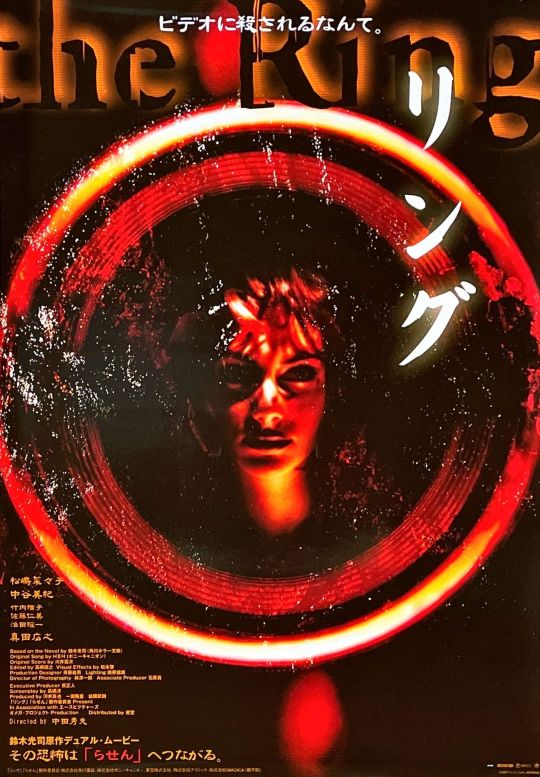
Hideo Nakata’s "Ringu" (1998) emerges as a chilling tale rooted in the realm of urban legend, Nakata's masterful direction plunges audiences into a realm of existential dread, where technology and ancient superstitions collide in a spine-tingling narrative that transcends cultural boundaries. "Ringu" not only captivates with its eerie storyline and iconic imagery but also serves as a catalyst for the evolution of Japanese horror cinema, influencing filmmakers worldwide and sparking a global fascination with its uncanny tale. Through an analysis of critical perspectives and cultural impact, this essay delves into the enduring legacy of "Ringu" and its profound influence on the horror genre, both in Japan and beyond.
youtube
Hideo Nakata’s Ringu (1998) begins as a rumor that is going around amongst Tokyo’s teenagers. Stating that there is a cursed videotape that will kill you if you watch it. So, when a high school student name Tomoko and her friends die mysteriously, her aunt Reiko investigates her niece’s death.
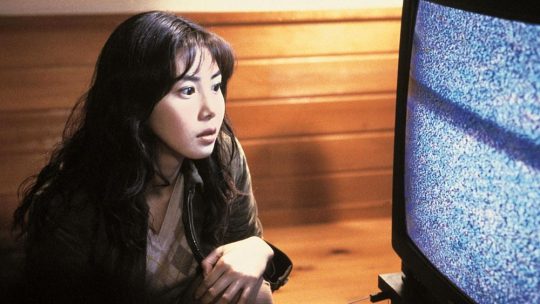
youtube
Reiko’s search leads her to the cabin which her niece originally watched the cursed videotape, Reiko ends up watching the video which features rando, bizarre images. After she views this disturbing video, she sees an apparition on a girl dressed in white with long black hair and receives an ominous phone call. After this Reiko is convinced that she now shares the same fate as her niece, she employs the help of her ex-husband Ryuji who has psychic abilities and when their son Yoichi accidentally sees a copy of the tape the two work together to figure out how to save themselves and their son from this.
In Emily Nighman’s review of Ringu (1998) for The Film Magazine she states “The film may lack the genre’s characteristic jump scares, gory monsters, and epic fight scenes. But its timeless terror stems from its basis in reality and, therefore, our inability to distance ourselves from it. It plays on age-old fears of the paranormal while tapping into modern phobias of self-aware technology that we don’t fully understand. This tension makes the film a horror classic that stands the test of time.” Nighman claims that the film’s unique twist on the technology versus old ways trope is what makes the film so powerful. Hideo Nakata takes tried and true tropes and applies them to Ringu (1998), keeping these intense and memorable storylines while also paving the way for future horror films. Nighman claims that the fear within Ringu (1998) also lies within the fact that the story is not completely made believe and that “the story of Sadako’s mother, Shizuko, is based on a true story. The director explains that a woman named Mifune Chizuko once claimed to be psychic and, while being studied by a professor at Tokyo University, was eventually discredited and took her own life. With this knowledge, viewers may feel that the tape’s origin story is even more realistic and terrifying.” Nighman’s revels in the fact Ringu (1998)’s incredible uniqueness will be the reason that the film stands the test of time in the film industry.
In Jessica Balanzategui’s book called “The Uncanny Child in Transnational Cinema: Ghosts of Futurity at the Turn of the Twenty-First Century”, section three titled “Our fear has taken on a life of it’s own: the uncanny child in Japanese Horror Film”, she discusses how “the boom of child centered ‘J- horror’ cinema around the millennial turn as an expression of widespread cultural anxieties that national progress was coming undone”, seemingly critiquing how in Nakata’s film, which has risen to become one of Japan’s most commercially successful film product, “ignited a transcultural obsession with the uncanny child” (Balanzategui 155).
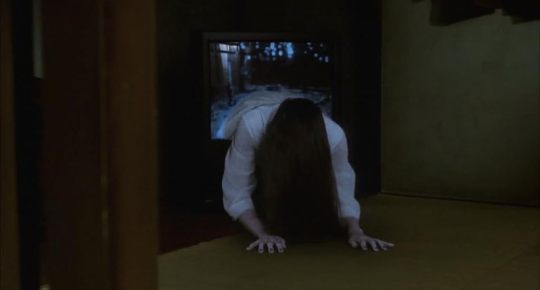
They go on to discuss how using Sadako as a beacon for the old ways coming to haunt new advancements within society “Sadako, the terrible aggressor of Ringu, has become the most recognizable horror icon of the new century: a strange but telling paradigm for this moment of global transition, considering that she functions as a harbinger for the collapse of chronological progress” (Balanzategui 156). In a separate chapter of the novel titled “Trauma’s Child: The uncanny child in transnational coproductions and remarks” she goes on to further critique the use of children as the main antagonist within these film which was spearheaded by Nakata and his film “Ringu” (1998) stating “subsequent to the global popularity of the Ring and Ju-on franchises, the child-focused J-horror cycle came to change the shape of the horror genre globally” (Balanzategui 221).

Like previously mentioned with Jessica Balanzategui, Ringu (1998) has became a global phenomenon, inspiring countless sequels and even an American and Korean remake. Sara Clyndes discusses whether or not Ringu (1998) has genuinely made a difference within both the Japanese and American/Western film industry within her essay “Has ‘Ringu’ (1998) changed both Japanese and American/Western cinema and if so, how?” Clyndes states that personally she does not think that Ringu (1998) has made a significant impact on western horror films of the past decade and that “Although DVD sales of the film increased as the remake gave it a higher profile, it was still quite an alien film in the west and remained so before it was remade in 2002”. She goes onto to say that Japanese films are well known for reflecting the socioeconomic and political anxieties surround the nation at the time, and that this makes it hard for Japanese films to resonate with a Western audience. Giving the example that “With current social anxieties and fears being the backbone of many Japanese films perhaps these films wouldn’t translate well in the west which could prove why there don’t seem to be any western horrors which draw from eastern sources”. Clyndes moves onto state that for Eastern films to do well within the Western box office that would have to westernize their films, loosing the entire essence of Japanese cinema as a whole.
youtube
In conclusion, "Ringu" (1998) stands as a seminal work in Japanese horror cinema, weaving a tale of dread and despair that continues to resonate with audiences worldwide. Emily Nighman's review for The Film Magazine highlights the film's ability to tap into age-old fears while addressing modern anxieties about technology, cementing its status as a timeless classic. Furthermore, Jessica Balanzategui's analysis sheds light on the cultural significance of "Ringu," particularly in its portrayal of the uncanny child as a symbol of societal upheaval and impending collapse. Despite its global success, Sara Clyndes raises questions about the film's impact on Western cinema, suggesting that cultural differences may hinder its reception outside of Japan. Ultimately, "Ringu" remains a haunting reminder of the power of storytelling to evoke fear and fascination across borders and generations, leaving an indelible mark on the world of horror cinema.
Ringu (1998) J-Horror Review | The Film Magazine (thefilmagazine.com)
Ringu (1998) - IMDb
"Has ‘Ringu’ (1998) changed both Japanese and American/western cinema and if so, how?" by Sara Clyndes: Part One | Horror Cult Films
Midnight Eye feature: The Death of J-Horror?
Our Fear Has Taken on a Life of Its Own: The Uncanny Child in Japanese Horror Film. (n.d.). In The Uncanny Child in Transnational Cinema (pp. 156–178). Amsterdam University Press.
Trauma’s Child: The Uncanny Child in Transnational Coproductions and Remakes. (n.d.). In The Uncanny Child in Transnational Cinema (pp. 219–236). Amsterdam University Press.
0 notes
Text
Blog #4
In the world of Japanese horror, during the 1990’s and 2000’s cinema witnessed the rise of a fresh wave of unsettling narratives that enthralled audiences with their inventive storytelling and eerie visuals. With the genre evolving, directors ventured into uncharted territories, experimenting with both cinematic techniques and themes, expanding the horizons of Japanese horror, and etching an even lasting impression on the global film landscape. An exemplary late addition to this evolution is "Pulse" (2001), helmed by Kiyoshi Kurosawa.
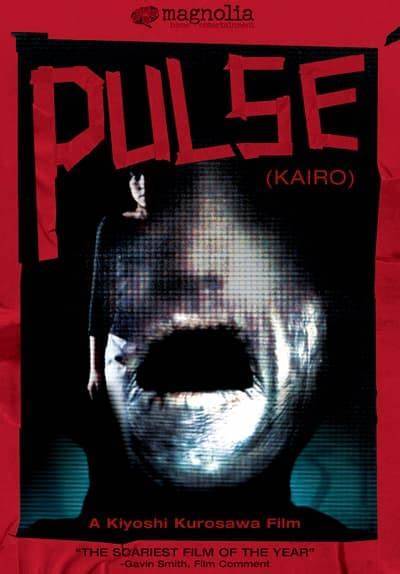
In "Pulse," Kurosawa delves into themes of solitude, technology, and existential dread, crafting an atmosphere of disquiet that lingers long after the screen fades to black. The storyline follows a group of individuals ensnared in a cryptic internet phenomenon that enables the deceased to transcend into the realm of the living. As the characters grapple with the repercussions of this supernatural intrusion, they are compelled to confront their innermost fears and vulnerabilities. Unlike the overt supernatural elements prevalent in preceding Japanese horror films, "Pulse" relies on nuanced cues and existential motifs to evoke terror. Kurosawa eschews conventional jump scares, opting instead for a gradual buildup of tension and atmospheric unease, drawing viewers into a surreal world where the boundaries between life and death blur.
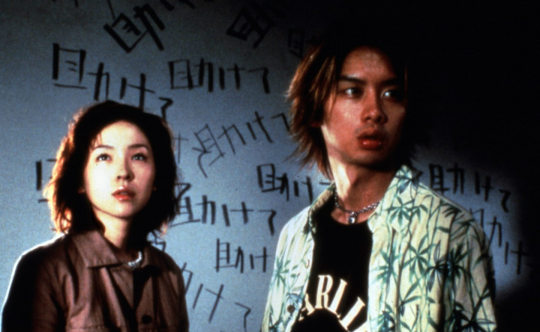
"Pulse" signifies a departure from Kurosawa's earlier films, showcasing a more contemplative and philosophical approach to horror. While his prior works often centered on external threats and tangible manifestations of fear, "Pulse" plunges into the psychological depths of terror, probing how technology can exacerbate our anxieties and estrange us from one another.
youtube
Pulse (2001) - IMDb
Midnight Eye review: Pulse (Kairo, 2001, Kiyoshi KUROSAWA)
0 notes
Text
Blog #3
Japanese horror films from the 1990’s and 2000’s have had an incredibly profound impact on the horror genre on a global size. These films’ unique ability to combine classical story telling and Japanese folklore with newer cinematic techniques propel these films as the innovative spear heads that they are. Withing this post we will explore the way that this genre of films has paved the way for the future of global horror by taking a look at the critically acclaimed films Ringu (1998) and Ju-on: The Grudge (2000) both of which have gone on to inspire horror movies across the globe.
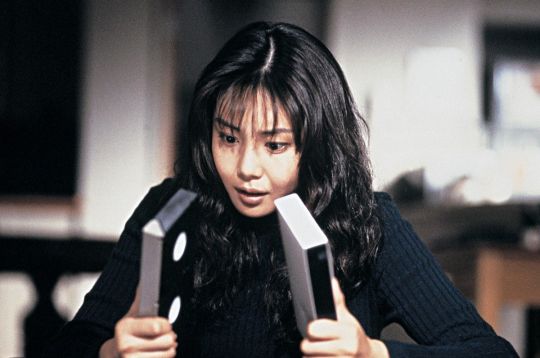
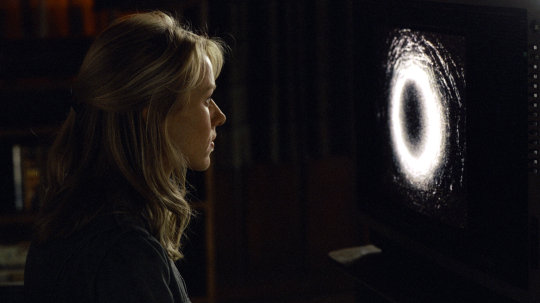
Ringu (1998) which we have spoken about frequently throughout this blog due to its massive impact on the genre, was directed by Hideo Nakata. The film paved the way for the incredibly popular genre of supernatural horror, which houses films like The Conjuring (2013), T he Blair Witch Project (1999), and Paranormal Activity (2009). Nakata paves the way for this genre to emerge, exploring tools such as atmospheric tension and eerie imagery, the film itself is a beacon for the films to come. So much so that America made a remake in 2002 called The Ring (2002) by Gore Verbinski.
youtube
This film followed the same plot with its older sister film Ringu (1998) where Rachel (played by Naomi Watts) is a Seattle- based journalist who begins to research the death of her niece after her sister asks her to, she then goes on a similar journey of discovering the possessed film which kills the watcher a week after they view the film. These two films share extraordinarily similar plot lines, and The Ring (2009) shares the same tactics that Ringu (1998) pioneered.
youtube
With the success of Japanese horror films in the 1990s and 2000s, this prompted production companies to invest in similar projects, both in Japan and abroad. Hollywood studios began acquiring rights to Japanese horror properties for remakes, leading to a wave of American adaptations such as "The Ring" (2002) and "The Grudge" (2004). This also began a trend of American films employing the same properties in the films that Japanese horror films had influenced. In the article “The Death of J-Horror?” by Nicholas Rucka they argue that this wave of inspiration coming from J-horror films has cause the death of the genre. Saying “Part of the problem with J-Horror, in my belief, is that the market has killed it. We have all been so inundated with A, B, and Z rated knockoffs that are full of the genre clichés, that there is no desire for any creativity anymore. But what's weird about the J-Horror phenomenon is that because it is J-Horror, the filmmakers seem to be afraid to step away from the genre tropes. It's almost like they're worried that their audience won't get it without the usual tricks.”
In conclusion, Japanese horror films of the 1990s and 2000s have had a lasting influence on other cinemas and filmmakers, shaping the way we approach and understand horror cinema. From iconic directors like Hideo Nakatato, production companies, the impact of these films can be felt across the global cinematic landscape. As we continue to explore the depths of Japanese horror, we uncover a rich tapestry of storytelling and innovation that continues to inspire and terrify audiences around the world.
The Ring (2002) - Awards - IMDb
Midnight Eye feature: The Death of J-Horror?
Ringu (1998) - Plot - IMDb
0 notes
Text
Blog #2
A monumental film in the realm of Japanese horror cinema during the 1990’s and 2000’s is Hideo Nakata's "Ringu" (1998). This iconic film, based on the novel by Koji Suzuki, introduced audiences to a chilling tale of supernatural terror that continues to captivate viewers to this day. In this blog entry, we will delve into the depths of "Ringu," exploring its haunting narrative, analyzing a key scene, and examining its enduring legacy in the world of horror cinema.
The film begins with the discovery of the disturbing legend surrounding a cursed videotape. According to the legend, anyone who watches the tape will receive a phone call immediately afterward, forewarning them of their death in seven days. When four teenagers mysteriously die on the same night, Reiko becomes intrigued by the story and begins investigating. Reiko discovers that her niece, Tomoko, was one of the victims and decides to dive into the mystery behind the cursed videotape to save herself and her son, Yoichi, who also watched the tape. Reiko employs the help of her ex-husband, Ryuji Takayama, a university professor specializing in folklore. Reiko proceeds to track down the origins of the tape and finds its connection to a remote mountain resort. As Reiko digs deeper, she uncovers the tragic story of Sadako Yamamura, a young girl with psychic powers who was murdered and thrown into a well years earlier. It is revealed that Sadako's vengeful spirit is responsible for the curse, seeking retribution for her untimely death. Reiko learns that Sadako's spirit has manifested itself in the form of a disturbing video that serves as a conduit for her evil powers. With time running out, Reiko and Ryuji race against the clock to break the curse and save themselves from Sadako's wrath. They discover that the only way to lift the curse is to make a copy of the cursed videotape and show it to someone else, passing on the curse to another unwitting victim. In a race against time, Reiko and Ryuji race to uncover the truth behind Sadako's death and find a way to stop her vengeful spirit before it's too late. Their investigation leads them to a remote cabin where Sadako's remains are buried, and they must confront the terrifying truth of her existence to break the curse once and for all.

"Ringu" is celebrated for its atmospheric tension, chilling imagery, and psychological horror, becoming a seminal work in Japanese horror cinema and inspiring numerous adaptations and sequels both in Japan and abroad. With its innovative storytelling and iconic imagery, "Ringu" continues to captivate audiences with its tale of supernatural terror and the enduring power of urban legends.
One of the most iconic scenes in "Ringu" occurs when Reiko and her ex-husband, Ryuji Takayama, watch the cursed videotape together. The scene is fraught with tension as the eerie images on the tape slowly reveal themselves, accompanied by a haunting soundtrack that sends shivers down the spine of the viewer. As Reiko and Ryuji watch in horror, they realize the true nature of the curse and the dire consequences they face if they cannot solve the mystery in time. This scene effectively captures the sense of dread and impending doom that pervades the entire film, setting the stage for the terrifying events that unfold.
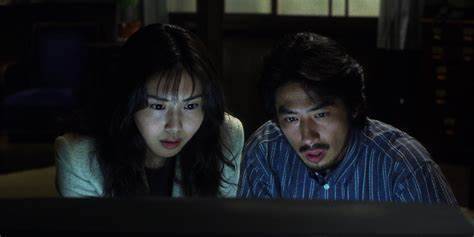
"Ringu" (1998) remains a pivotal work in Japanese horror cinema, captivating audience all over the globe with its eerie atmosphere, chilling narrative, and unforgettable imagery. “Ringu” (1998) has also inspired western cinema through its exploration of supernatural terror and psychological horror, the film continues to resonate with viewers and inspire filmmakers around the world as we see in the American remake “The Ring” (2002). As we unravel the mysteries of "Ringu," we uncover a tale of fear and dread that transcends cultural boundaries and leaves an indelible mark on the annals of horror cinema.
How does J-horror classic Ring (1998) compare to its 2002 Hollywood remake? | South China Morning Post (scmp.com)
It Came From the East... Japanese Horror Cinema in the Age of Globalization - Gnovis Journal (georgetown.edu)
youtube
0 notes
Text
Blog #1
The 1990s and 2000s marked a revolutionary era for Japanese horror, with a surge of innovative and creativity in the film industry. Captivating audiences all over the globe, this period saw the emergence of incredible directors, iconic films, and made a huge impact on the global horror genre as a whole. From psychological thrillers, to slashers, to paranormal, Japanese horror of the 1990s and 2000s was doing it all. Showing off a unique combination of traditional folklore and new wave filmmaking techniques, leaving an indelible mark on the world of cinema.
During this revolutionary era of cinema, we saw the rise of iconic directors who reshaped the landscape of horror filmmaking in Japan. Hideo Nakata, Takashi Shimizu, Kiyoshi Kurosawa, and Takashi Miike emerged as iconic figures, each bringing their own distinct style to the genre. Hideo Nakata's "Ringu" (1998) is widely regarded as the turning point moment in Japanese horror, telling the story of a cursed videotape that brings death to anyone who watches it. Nakata's film sparked a global fascination with Japanese horror, inspiring many films to come including the American remake “The Ring” (2002). Similarly, Takashi Shimizu's "Ju-on" franchise (2000) captivated audiences with its haunting portrayal of a vengeful ghost and her cursed house. Shimizu's narrative structure and eerie visuals created an atmosphere of dread that resonated with audiences worldwide, spawning numerous sequels and American adaptations. Kiyoshi Kurosawa cultivated an atmospheric and introspective approach to horror, and explored themes of existential dread and societal alienation in films like "Cure" (1997) and "Pulse" (2001). Kurosawa's haunting imagery and philosophical undertones set him apart as one of the most innovative and creative voices in Japanese horror.
In addition to the directors, Japanese horror of the 1990s and 2000s was characterized by its distinctive storytelling tropes and thematic tactics. Japanese horror films often tapped into universal anxieties while grounding their narratives in cultural specificity. Themes of guilt, revenge, and the supernatural were incredibly popular within these films, and they reflected the cultural and historical context of Japan and resonating with audiences on a deeply emotional level.
Furthermore, Japanese horror films during this period had a massive impact on the global horror genre, influencing filmmakers and audiences around the world. Hollywood adaptations of Japanese horror classics, such as "The Ring" (2002) and "The Grudge" (2004), brought these stories to audiences around the globe, sparking an interest in Japanese films and the Japanese film. Meanwhile, the "J-Horror" aesthetic, characterized by its emphasis on atmosphere, psychological tension, and slow-building dread, became a of contemporary horror, shaping the stylistic sensibilities of filmmakers across the globe.
In conclusion, Japanese horror of the 1990s and 2000s represents a transformative period in the history of cinema, marked by visionary directors, iconic storytelling tropes, and a global impact that continues to reverberate to this day. With its blend of traditional folklore, societal anxieties, and cutting-edge filmmaking techniques, Japanese horror captivated audiences with its ability to evoke fear and fascination in equal measure, leaving an indelible legacy on the world of cinema.
youtube
1 note
·
View note